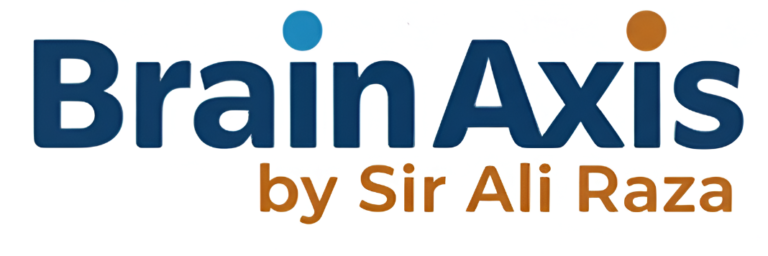A range of significant events that shaped our modern age occurred in the 1,250 years from 500 to 1750 AD.
This period is often referred to as the Middle Ages in Europe and the post-classical period globally.
As the Roman Empire declined towards 500 AD, groups of invaders moved into and took control of Roman territory.
The collapse of the Western Roman Empire led to a power gap.
Various Germanic tribes, such as :
-The Goths
-Vandals
-Franks
established new kingdoms in its former provinces.
One such group was the Vikings from Scandinavia, a group of seafarers and warriors who raided and settled in various parts of Europe from the late 8th to the early 11th centuries.
Feudal System in Early Medieval Europe
- Society in early medieval Europe was organized under a strict feudal system, a way of governing and controlling land based on loyalty and service.
- In this system, lords granted pieces of land, called fiefs, to others.
- A fief was a portion of land that could include farmland, villages, and the people living on it.
- The people who received these lands were known as vassals.
- Vassals promised loyalty and provided military service or labor to the lord in return for the fief.
- This arrangement created a fixed social order:
- King at the top
- Nobles below the king
- Knights under the nobles
- Peasants at the bottom
Feudalism Beyond Europe: The Case of Japan
- Feudalism was not limited to Europe; it also appeared in parts of Asia.
- In Japan, a similar feudal system developed.
- The Shogun and Daimyo held the highest positions, like kings and lords in Europe.
- The samurai served as the warrior class, similar to European knights.
From the Dark Ages to the Renaissance in Europe
- Early medieval times were seen as periods of slow progress in technology and knowledge.
- This era was often called the “Dark Ages”, though historians today consider this label inaccurate.
- While Europe advanced slowly compared to other regions, important groundwork for future progress was being set.
- In the Renaissance period (starting in Italy in the 14th century), Europe saw a revival of learning and art.
- The Renaissance was a time in European history marked by renewed interest in ancient Greek and Roman ideas, leading to great achievements in art, science, and philosophy.
- This movement sparked major cultural and intellectual changes that shaped the modern world.
Islamic Golden Age and the Spread of Islam
- During the same period, Asia and the Middle East saw major progress in knowledge and technology.
- This era is known as the Islamic Golden Age, marked by advances in mathematics, science, medicine, and astronomy.
- The rise of Islam in the 7th century created a powerful new religion and civilization.
- Islam spread quickly across the Middle East, North Africa, and into Spain.
- The Crusades (11th–13th centuries) were religious wars where European Christians tried to take the Holy Land from Muslim rule, shaping trade, culture, and politics.
- Several great Islamic dynasties (families of rulers who passed down power for generations) expanded and strengthened Islamic civilization:
- Umayyad Caliphate – expanded into Spain.
- Abbasid Caliphate – centered power in Baghdad.
- Ottoman Empire – later ruled large parts of Europe and Asia.
- Mughal Empire – dominated much of South Asia.
Perfect — here’s the fully numbered, logically connected, cause-effect structured version in school textbook style:
Transformations in Asia and Global Connections
- Regional Empires and Shifts in Power
- In Southeast Asia, the Khmer Empire rose to power in Laos, Cambodia, and Thailand, leaving behind the grand temple of Angkor Wat as a symbol of its strength.
- In Japan, political control shifted away from the emperor to shoguns (military rulers) and daimyos (feudal lords), creating a new power structure.
- In Central Asia, the Mongols, led by Genghis Khan, expanded rapidly and built the largest contiguous land empire in history.
- The Mongol Impact and the Silk Road
- The Mongol Empire revived and secured the Silk Road, which allowed goods, technologies, and cultural practices to move between Asia and Europe.
- As a result, connections between continents grew stronger and laid the foundation for later global interactions.
- Technological Advances in Navigation
- Growing contact and curiosity led to the development of better ships and improved navigation techniques.
- This made long-distance sea voyages possible and encouraged states to explore beyond their known boundaries.
- The Beginning of the Age of Exploration
- European powers were motivated by the search for new trade routes, access to resources, and the spread of religion.
- Therefore, they bypassed traditional land routes controlled by intermediaries and opened direct sea routes to Asia and the Americas.
- Discovery of New Worlds
- Explorers such as Christopher Columbus (1492) reached the Americas, while others expanded knowledge of Australia and the Pacific.
- These discoveries led to colonization and triggered the Columbian Exchange—the transfer of plants, animals, people, and diseases across continents.
- Movement of People and Cultures
- Expansion and trade encouraged mass migrations, both voluntary and forced (including the transatlantic slave trade).
- Along with these movements came the spread of religions, artistic traditions, and scientific knowledge across continents.
- Impact on Global Development
- The global exchange of knowledge resulted in advancements in cartography and shipbuilding, which further supported exploration.
- The introduction of new crops like maize and potatoes transformed agriculture and increased population growth in Europe and beyond.
- Together, these changes pushed the world toward a new era of science, technology, and interconnected societies.
